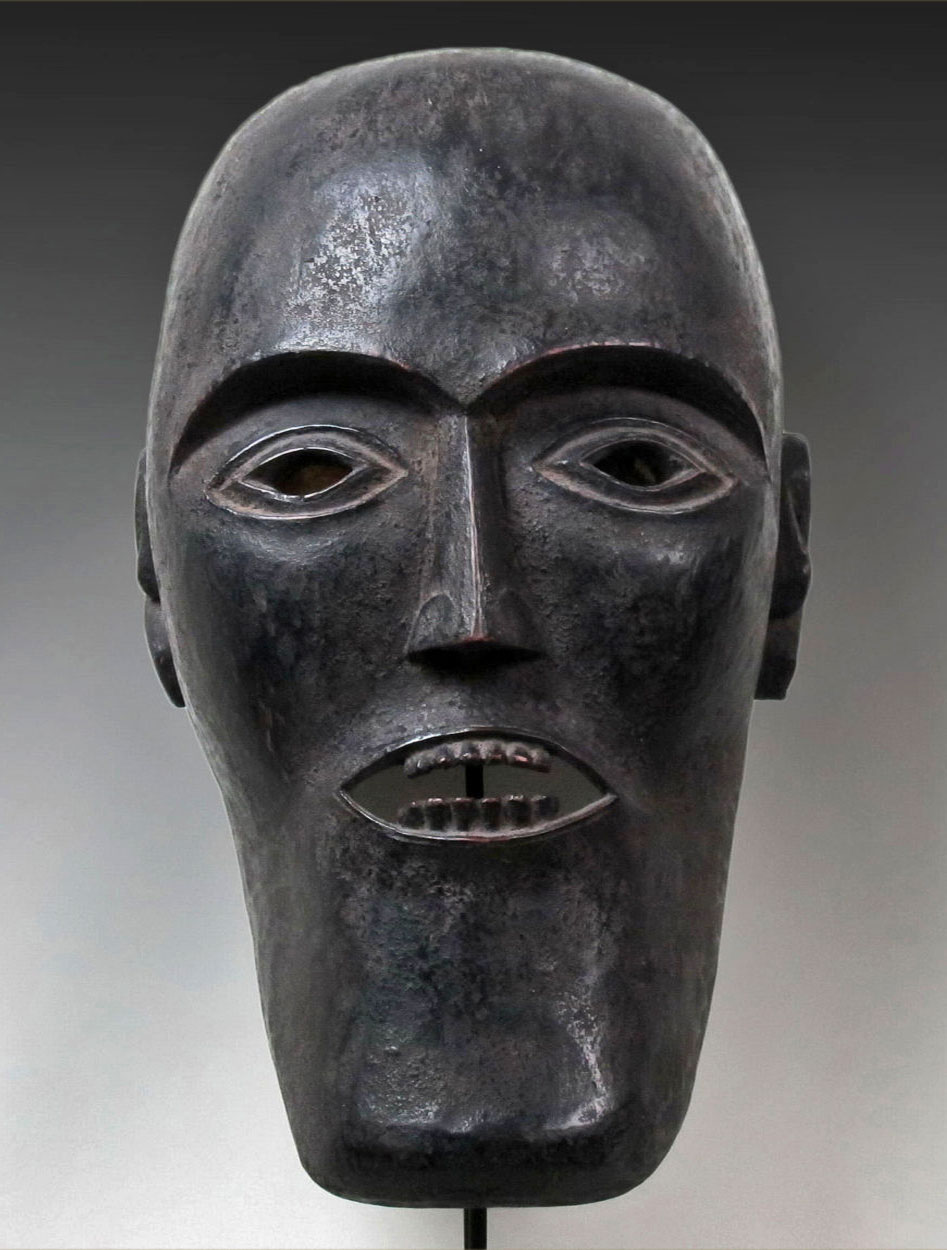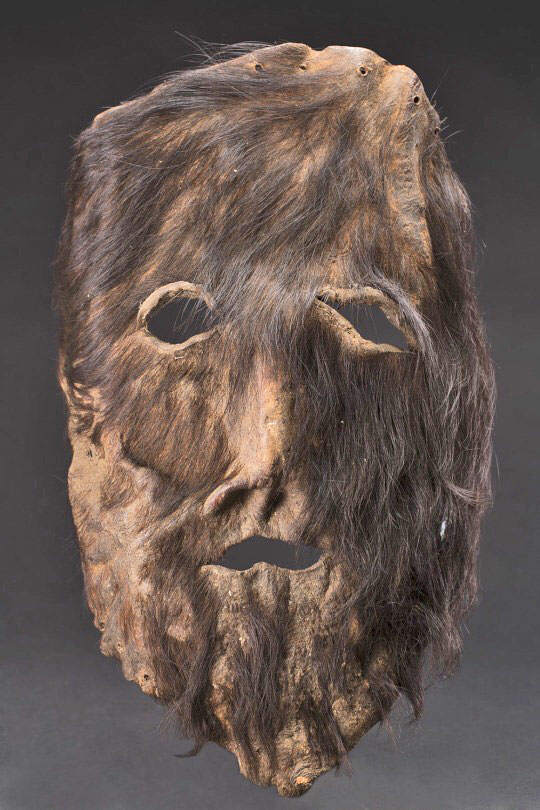 Q: I purchased this mask at an antique shop in Virginia. I am wondering where it is from and was it made to be worn or is it just a tourist trade item. It is about 6.5 inches wide and high, appears to be carved from coconut or some very light weight wood. I think I paid about $50 for it. Curious about the flame symbol at the eye point. Is it Buddhist of some sort? Richard, 1694
Q: I purchased this mask at an antique shop in Virginia. I am wondering where it is from and was it made to be worn or is it just a tourist trade item. It is about 6.5 inches wide and high, appears to be carved from coconut or some very light weight wood. I think I paid about $50 for it. Curious about the flame symbol at the eye point. Is it Buddhist of some sort? Richard, 1694
A: Your Bagong half mask is traditional and seems to have been used. Bagong masks are also made with the jaw, but they cost a little more and don’t permit drinking. The dancer wearing it portrays a comic character who is in several of the Wayang Wong dance dramas. Most of the villages and towns in Java perform these dances frequently. Here is what Wikipedia has to say:
Some theatrical traditions incorporate dance to such an extent that they are typically termed “dance-dramas.” Of these traditions, the wayang wong and wayang topeng (masked theatre) of Java and Bali, as well as the Balinese plays recounting the tale of the witch Calonarang, are among the most widely known. Since independence, Indonesian choreographers trained at the country’s performing arts academies have been well versed in Western classical ballet and modern dance, in addition to local styles. Consequently, some have adapted local dance-dramatic works for contemporary audiences. The sendratari, for example, is essentially an updated form of traditional dance-drama that combines elements of local theatrical genres (including puppet theatre) with movements, staging, and costumes derived from contemporary styles; in Java, the form is associated with the Prambanan Temple.
Apart from its crucial role in dance-dramas, Indonesian dance serves many diverse functions, from the ritual to the purely recreational. Performances may be subtle and stylized like the female court genres of pakarena in southern Celebes and srimpi in central Java, graceful yet masculine like the seudati of Aceh and the kancet laki of the Kenyah of eastern Kalimantan, or demonstrative, dynamic, and interactive like the Balinese jangger, which is performed by a mixed group of men and women. A-






